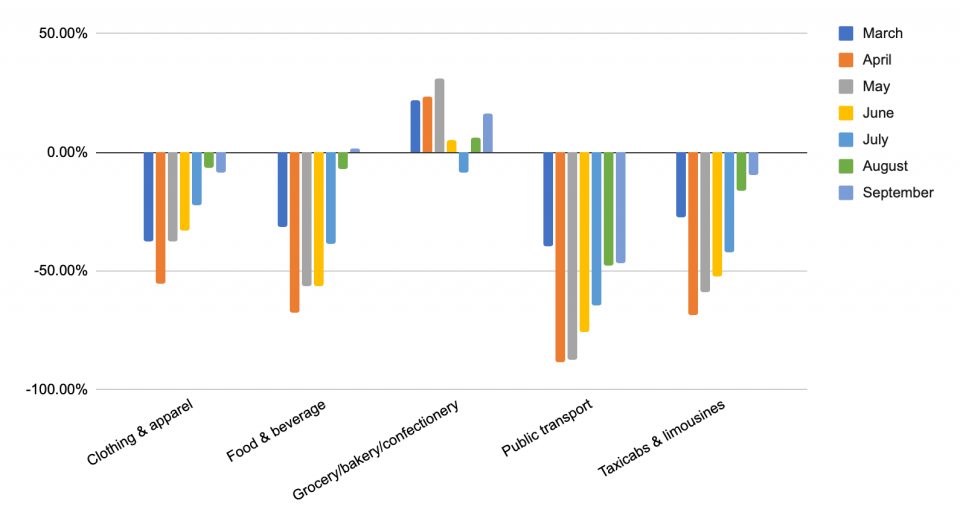Exclusive: London restaurant spend topped 2019 before new restrictions

Spending at restaurants, pubs and bars in London climbed above 2019 levels for the first time during the coronavirus pandemic before new restrictions were put in place, data provided exclusively to City A.M has shown.
Food and beverage spending was 1.7 per cent higher in September than a year earlier, according to Fable Data, which tracks card payments and bank transactions.
The figures will make painful reading for many in the hospitality sector. They show that pubs, bars and restaurants were recovering before a surge in coronavirus cases dealt them another blow.
Ministers introduced a 10pm curfew for pubs and restaurants at the end of September to try to limit the spread of the virus. Last week, they put London under Tier 2 restrictions, meaning members of different households are banned from mixing anywhere indoors.
Economic support from the government will also fall sharply in November when the furlough scheme ends. It will be replaced by the much less generous job support scheme.
The data from Fable gives a snapshot of how Londoners have spent their money during the pandemic.
Spending on food and beverage rose sharply during the Eat Out to Help Out scheme in August to just 7.3 per cent lower than a year earlier. That compared to a 38.6 per cent gap in July. The category includes restaurants, pubs, bars, and takeaways.
Some restaurants and business groups worried that spending would drop again as the incentive scheme came to an end. But spending on eating and drinking out rose into positive territory for the first time during Covid.
London consumer spending compared to a year earlier

Grocery spend up but public transport lags
Fable Data analyst Laura Campbell said the overall spending trend across different sectors in the capital was “still upwards, but slower” in September.
Londoners spent 16.2 per cent more at grocers and bakeries last month than a year earlier, Fable’s figures showed. They had spent 6.2 per cent more in August than in the same month in 2019.
The data chimes with spending figures from Barclaycard. The payments company suggested some people had started stockpiling again as coronavirus cases rose.
Campbell said: “We’re not up to the levels yet we were seeing back in the March-April panic-buying days, but we are seeing a definite increase.”
She cautioned against drawing conclusions about the economy from this “selection of spending data”, however.
Spending on public transport in September remained 46.6 per cent below where it was a year earlier. Wariness of Covid meant the figure was barely an improvement on August’s 48 per cent deficit.
Spending on taxicabs and limousines continued to rise, but appetite for clothing and apparel slipped slightly.
Economists have warned that the UK’s recent surge in coronavirus cases and the government’s new restrictions are likely to hold back the recovery.
Bank of England policymaker Gertjan Vlieghe yesterday said that the second wave meant there could well be more job losses than the Bank initially expected.